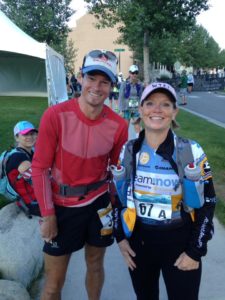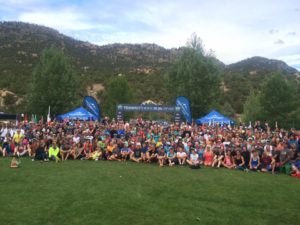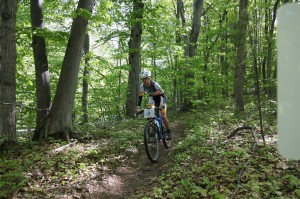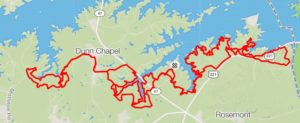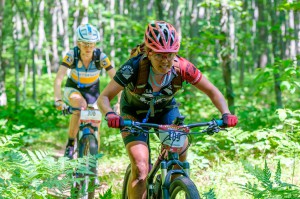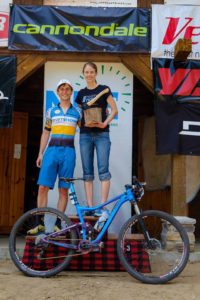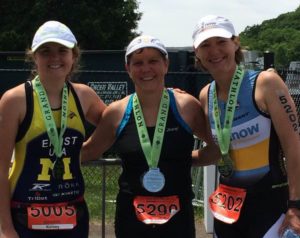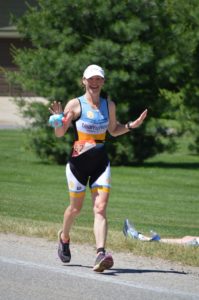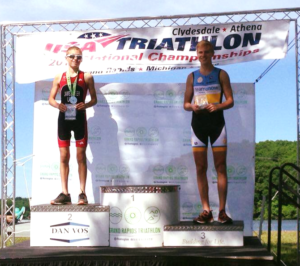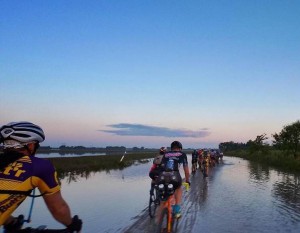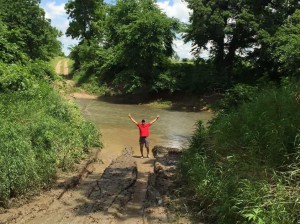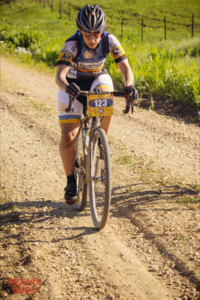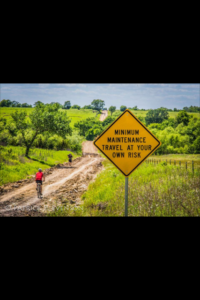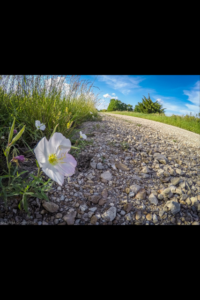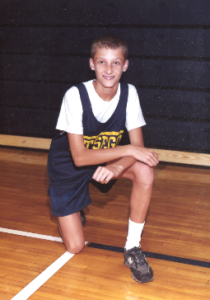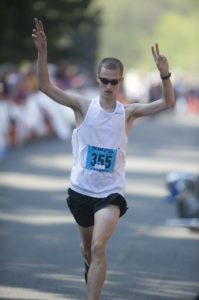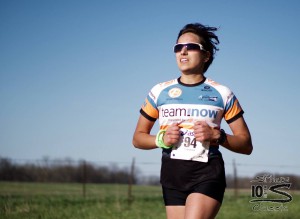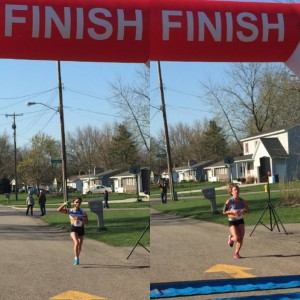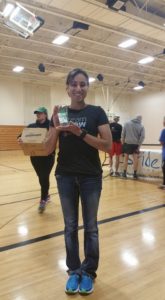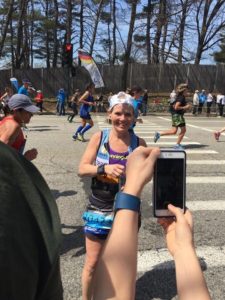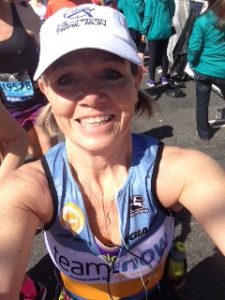–By Raquel Torres, OAM NOW triathlete
This past Sunday, July 17 I competed in my first Ironman 70.3 in Racine, Wisconsin. After this event, I decided to be more active in sharing my experiences in the hopes it will inspire others to keep fighting for their goals and dreams. I suffered a stress fracture in my right femur at a very critical period on my personal life. Honestly, I spent a long time (Summer 2015-2016) seriously considering retiring from my dream to be an athlete as a profession. I considered finding a regular job, as I did in 2015 almost abandoning my sports career, but my heart would not let me.
I was willing to sacrifice even more to follow my heart, even with lots of noise and my own close family pushing me to abandon my dream. Many people thought that doing this is impossible, perhaps simply expressing their own fears. I make this comment as it has been one of the biggest challenges in my life. I have fought against a thousand and one obstacles: mental, physical, family-related, economic, emotional and even social.
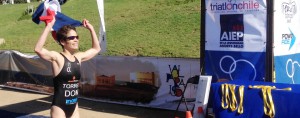
I competed in the ITU Elite level triathlon, classifying for the Central American Games in Veracruz, Mexico in 2014 and the Pan American Games in Toronto, Canada in 2015 which was achieved with great sacrifices in pursuit of being an Olympian in Rio. I also competed in more than 20 races internationally and earn the necessary points to reach the world ranking, which is the way to qualify for the Olympics in triathlons. Despite the many obstacles, I believe that trying to qualify for the Rio Olympics was well worth it. By all means, it was my schooling, all this knowledge and experiences is invaluable, and with God all of this only the time will reflect.
In February/March 2016 I came to the U.S. for treatment and they discovered the stress fracture and informed me that the rehab period was going to be VERY slow. Stress fractures typically come from drastic changes in your training, nutrition or training terrain. In my case, it was probably the change from not training for 3 months and then going from 0 to 100 way too fast.
I started running in April 2016 after months off, slowly jogging one minute and increasing the time every 3 days so that after one month I was able to run for 15 minutes without stopping. I continued to increase slowly after that. I committed to catch opportunities, to create them, to read and to gain mental knowledge in the field to develop and grow emotionally. I created a mental plan and got to know myself again well.
Now, after so many people commenting that I should try the 70.3 distance, I decided to try a new thing, I planned a trajectory so that I could do my first 70.3 in Wisconsin.
The Racine IM 70.3, July 17, 2016
Retrospective review:
I arrived on July 15th to Wisconsin to know the area and to train on my new bike which I had only had for two days, but I was happy to try something new with this “machine.” I was focused and I decided to mentally gain as much from this experience as possible, to concentrate on the details and not on the whole environment.
The day before the race I was happy, I would again compete after almost one year, after I had thought never to be able to run again after the injury. On this occasion my daughter Chantal and her Dad, Eque were with me, both of whom have been of great support to me.
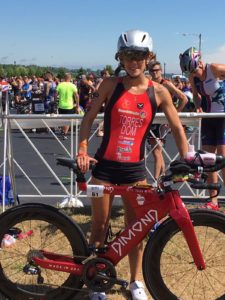
Raquel with her new bike in Racine
On race day my 4:30 AM alarm went off to prepare for the day. When we arrived at the transition area they mentioned the approaching storm and the possibility that the swim would be cancelled. I just took it in stride as nothing had happened. My attitude was that we have to give our best and focus on what I have control over. Then, they announced that the race would be postponed to 9:30 AM, so we walked to seek refuge at a nearby restaurant. I slept for a bit there and we ordered breakfast since I had only had my light breakfast which is what I usually take before racing, my shake and two slices of bread at 4:45 AM.
Thoughts, good actions and errors:
9:15 AM, we ordered American Breakfast- Over easy eggs, hash browns and French Toast.
The race started at 10:20 AM and I had not warmed up well, with a full stomach and a not so positive attitude, I was almost in shock as I never accepted the idea in my head and heart of this change in the race. Perhaps a way to manage change was to not accept it as real.
A 70.3 Ironman race consist of: 1,900 meters swimming on open water, 90 kilometers (56 miles) on the Bike and 21 kilometers (13.1 miles) running. In this case, they had us do only 30k on the bike using a time trial start, where each athlete leaves 30 seconds apart according to their ranking. I was second to last to start.
The contemplative feeling in my mind and soul was starting to turn off while I was in line to start, which is when I am normally focused with an explosive mind. In this case I was thinking about all the items outside of my control- the wind, cancelled swim, all that went wrong. I allowed these thoughts to dictate the other factors for which I did have control such as nutrition, strategy, respiration and maintaining focus.
Before I started, I had already heard that the route was very very bumpy with potholes caused by the long winter months. Using the aerobars on a street with bumps and with winds gusting from 25-30 MPH was very challenging. The first 10 miles I held a good pace and caught two other athletes who had left before me. I felt fast and strong and am very thankful to my Coach Mark Olson as it is nice to see and feel improvements even in the worst conditions. However, I was honestly riding very uncomfortably as I was afraid to fall. I was not able to take more than one Gel and I did not have water as I left it behind thinking I wouldn’t need it since they had shortened the race distance, my stomach hurt and I did not have the desire to push hard. But after the first 20 miles, I was thirsty and I had no water.
I arrived at T2 comfortably, but I was not happy with myself and when I started to run I said to myself, keep the pace as your coach told you. It has been almost a year since I had run this much only doing 18 k twice. I kept the pace comfortable but I was dying of thirst, I was dehydrated and when I tried to eat something or take fluids other than water I felt like I was going to vomit. After the first 10 k I felt like my body was wasting away, I had no energy. I tried twice to take Coke and Red Bull, which pushed me a bit but I had no desire for anything, so I just decided to mentally focus on completing the event. I finished 12th, but I discovered lot of space for improvement.
I think after all, I learned my weaknesses and how to manage situations, and to have a plan A, B and C. I realized the importance of quieting intrusive thoughts and channeling the important and positive. I learned to concentrate on what I have control over, make intelligent decisions even when things change, and not to allow the storm to stop me from rowing in the direction I want to go.
